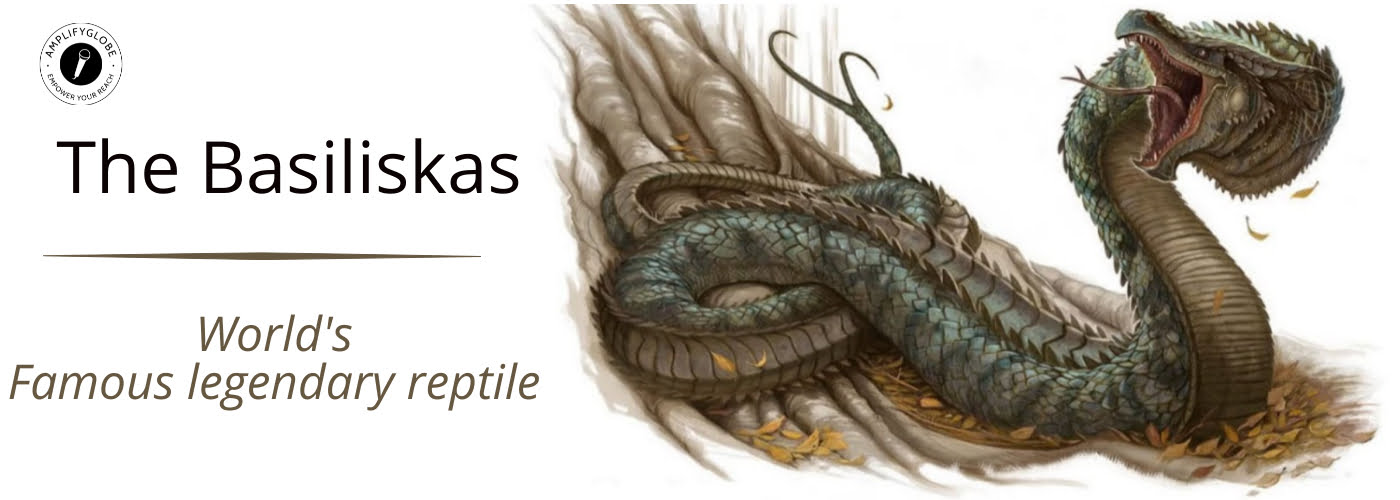Throughout history, myths and legends have captivated the human imagination, sparking curiosity and fear in equal measure. Among the many creatures that have found their way into the annals of folklore, one stands out as a symbol of dread and fascination – the Basiliskas. This legendary creature, its serpent-like form and deadly gaze, has woven its way into the fabric of human culture, leaving a lasting legacy. In this exploration, we will delve deep into the origins, characteristics, and cultural significance of the Basiliskas, unraveling the mysteries surrounding this mythical terror.
Discover the secrets behind the rich cultures of the Aymaraes, the Kazakh, the Sami People, the Ainu of Japan, the Adivasi and the Akha People.
The Origins of the Basiliskas
Historical Roots
The Basiliskas, often referred to simply as the Basilisk, traces its roots back to ancient civilizations, particularly in Europe and North Africa. Its name originates from the Greek word “basiliskos,” signifying “little king” or “kinglet,” which reflects the creature’s regal and fearsome reputation.

Variations Across Cultures
Interestingly, variations of the Basilisks appear in different cultures across the world. In European folklore, people typically depict it as a serpent or dragon the added feature of a deadly gaze. In contrast, North African versions often portray it as a serpent the head of a rooster, emphasizing its association death and poison.
The Anatomy of the Basiliskas
Physical Appearance
People often describe the Basiliskas as a reptilian creature that resembles a snake or a dragon but possesses distinctive features setting it apart. Its body elongates, and it typically displays scales in varying colors, ranging from deep green to fiery red. However, it boasts its most iconic feature a head crowned by a crested comb reminiscent of a rooster, which reflects its North African influences.
The Deadly Gaze
One of the most chilling aspects of the Basiliskas is its gaze. Legend has it that making eye contact the creature can prove fatal. Many believe that the Basiliskas can cause paralysis and turn its victims to stone, a phenomenon often associated the Gorgon Medusa in Greek mythology.
The Basiliskas in Mythology
Biblical References
The Basiliskas has made appearances in various religious texts and mythologies. In the Bible, it is mentioned in Isaiah 14:29, where it is associated a serpent and a fiery flying serpent. This reference is thought to have contributed to the creature’s ominous reputation.
Harry Potter Connection
The Basiliskas also gained contemporary fame through J.K. Rowling’s Harry Potter series. In “Harry Potter and the Chamber of Secrets,” a Basilisks is depicted as a monstrous serpent controlled by the villainous Tom Riddle, adding a new layer to the creature’s mythology.
The Basiliskas in Art and Literature
Medieval Bestiaries
During the Middle Ages, bestiaries were popular books that cataloged various animals, both real and mythical. The Basiliskas frequently appeared in these texts, described in vivid detail and accompanied by illustrations that only fueled the imagination.
Renaissance Art
In the Renaissance period, the Basiliskas continued to be a popular subject in art. Artists such as Albrecht Dürer and Leonardo da Vinci incorporated the creature into their works, depicting it as a fearsome and awe-inspiring figure.
The Symbolic Significance of the Basiliskas
Fear and Symbolism
The Basiliskas embodies themes of fear, danger, and the unknown. Its deadly gaze serves as a cautionary symbol, warning against the consequences of recklessness and curiosity. It represents the darker aspects of the human psyche, including our fascination danger and the potential consequences of our actions.
Political and Cultural Symbolism
In history, people have used the Basiliskas as a symbol in political and cultural contexts. For example, it was adopted as a symbol by several European rulers and military units, signifying their power and fearlessness. This demonstrates how the creature’s mythological significance can transcend its origins and take on new meanings.
The Legacy of the Basilisks
Modern Interpretations
In the modern era, the Basiliskas continues to inspire artists, writers, and filmmakers. Its appearances in popular culture have evolved, adaptations ranging from video games to movies, where it often serves as a formidable adversary.
Lessons from the Basilisks
The enduring legacy of the Basiliskas reminds us of the enduring power of myth and legend in shaping our cultural and psychological landscapes. It teaches us to confront our fears and examine our fascination the unknown, all while appreciating the rich tapestry of human storytelling.
Conclusion
The Basiliskas, a creature born from ancient myths and legends, has left an indelible mark on human culture. Its origins, physical characteristics, and symbolic significance have evolved over centuries, offering us a glimpse into the ever-evolving nature of folklore. From biblical references to contemporary adaptations, the Basiliskas continues to capture our imaginations, challenging us to confront our deepest fears and desires. In the end, the Basiliskas stands as a testament to the enduring power of myth and the timeless appeal of the monstrous and mysterious.